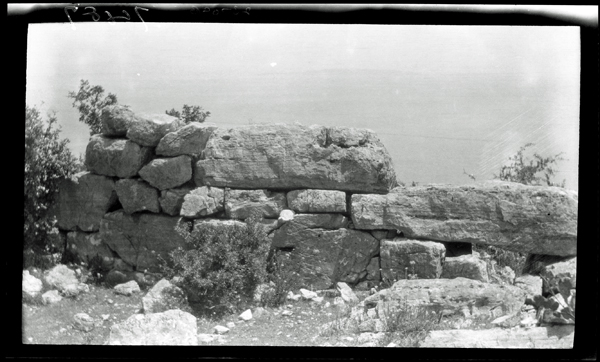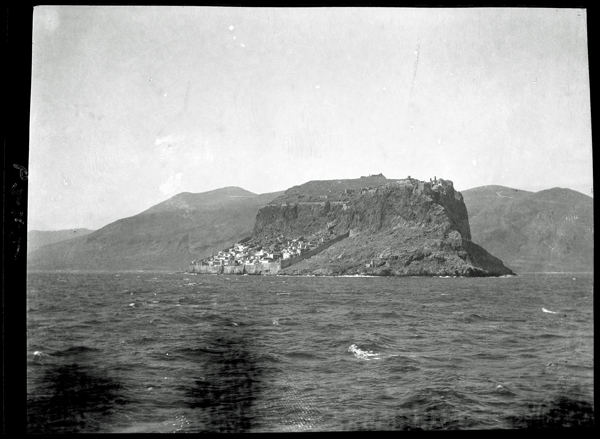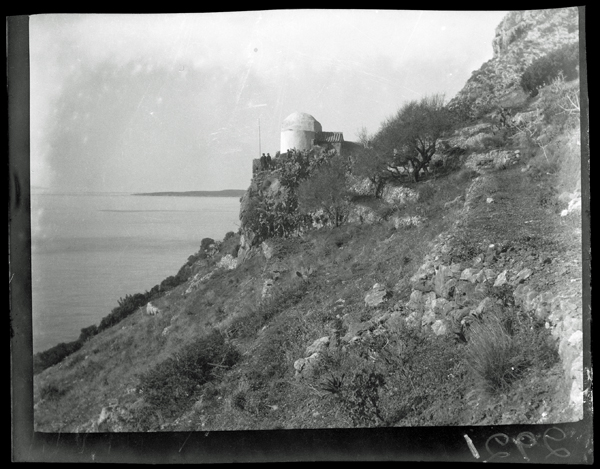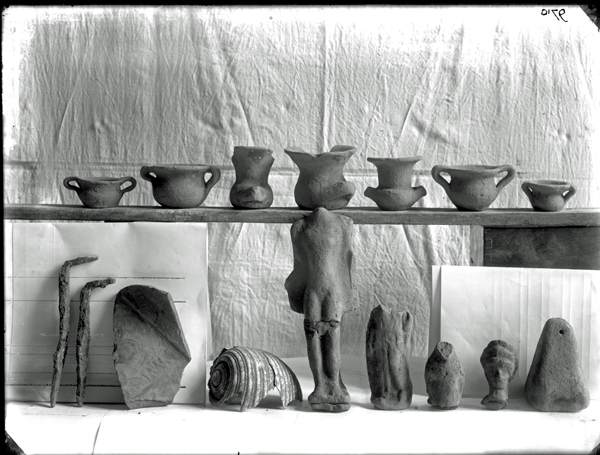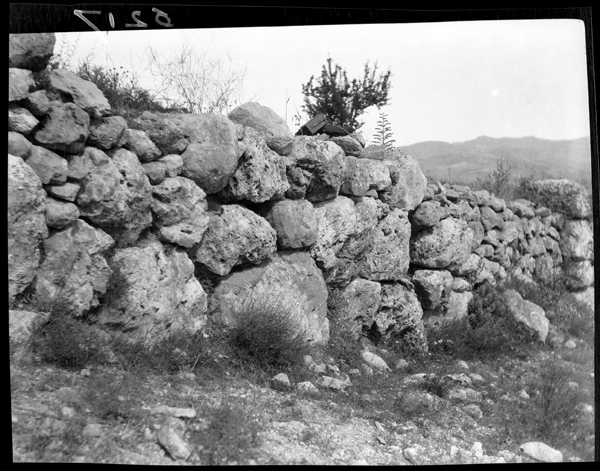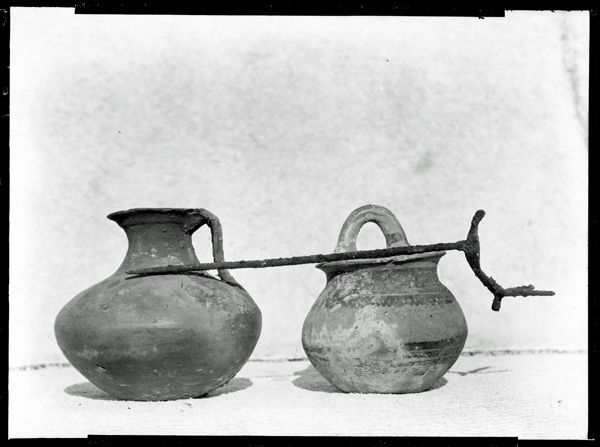Sparta Groundwork: SPHS Images of Early BSA Explorations in Laconia
One of the major British School at Athens (BSA) archaeological endeavours in the early 20th century was the campaign in and around Sparta in 1906-1910: the survey and accompanying trial excavations in various parts of the ancient site of Sparta, but most significantly, the extensive excavation of the sanctuary of Atemis Orthia and that of the nearby Menelaion. However, quite a bit of groundwork preceded these investigations. The Annual Report printed in the Annual of the British School at Athens (ABSA) described the busy 1903-1904 academic year, mentioning the construction of the new Penrose Library, the successful excavations on Crete at Palaikastro (see Archive Story, Digging Crete), and, significantly, the inception of a survey of Laconia.
What the Annual Report did not report was a debate among members of the BSA Managing Committee in London who wanted the Director, R.C. Bosanquet, to investigate the possibility of excavating the site of Sikyon in Corinthia instead of focusing on Sparta. The request was made in a letter from the Honorary Secretary of the BSA, William Loring, dated 13 June 1903. We do not have Bosanquet’s response to this letter, but as is clear from the events that followed, the BSA went ahead with its Laconian ambitions. Bosanquet was recorded in the Annual Report as having visited Sparta in December 1903 and again in April 1904, laying the groundwork for future work. By the end of 1904, the Laconia Exploration Fund, was opened to subscriptions in London to finance the work. The actual excavations at Sparta, however, did not begin for another two years by which time Bosanquet had handed over the reins of the Directorship to R.M. Dawkins.
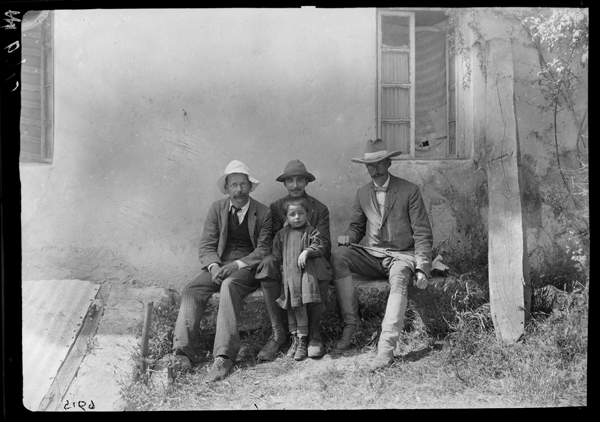
BSA SPHS 01/4911.6915. Excavators at Sparta (right to left: R.C. Bosanquet, A.J.B. Wace and R.M. Dawkins)
Initiated in 1904, the Laconia survey project’s aim was to understand the region’s wider topography and to record ancient or medieval remains in the landscape. From 1904 to 1909 a number of surveys – both topographical and architectural – would be conducted. The first was executed by E.S. Forster (BSA student) in March 1904, who explored the area of northwestern Mani between the Taygetos mountain range and Kalamata, published in 1904, and the area around Gytheion which would be published later. At the same time, Marcus Tod (Assistant Director and Librarian) investigated Spartan topography and epigraphy. This latter interest included cataloguing inscriptions in the newly re-organised Sparta Museum. Tod was joined in this cataloguing venture by A.J.B. Wace (BSA student) who studied the sculpture, architectural fragments and miscellaneous antiquities. The material they described came from from previous investigations, many in the 19th century, by P. Kastriotes, D. Philios, H. Dressel, A. Milchhoefer, and Ch. Tsountas. Tod’s and Wace’s catalogue was published in 1906 just as the BSA’s first season of excavation at Sparta began. The BSA SPHS image collection has no images from Forster, but there are a number of photographs that document Tod’s and Wace’s work in the Sparta Museum, corresponding to a number of the line drawings that appear in the publication.
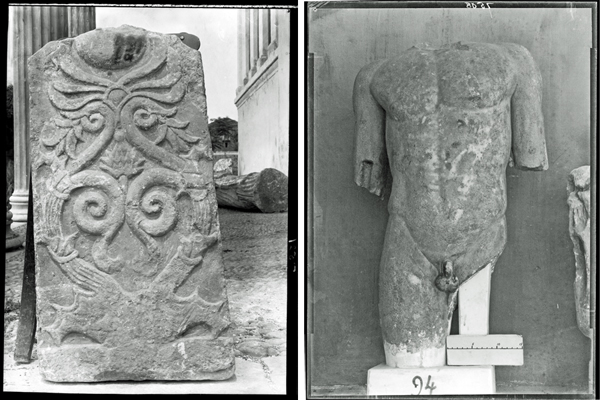
Left: BSA SPHS 01/3894.7521. Sparta Museum: No. 454b, Relief sculpture in bluish marble with acanthus ornament. Right: BSA SPHS 01/4934.7508.1. Sparta Museum: No. 94 Eros torso
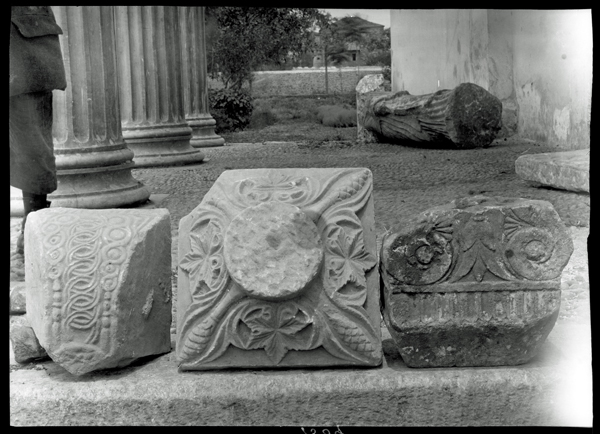
BSA SPHS 01/4936.7509. Sparta Museum: Two Byzantine capitals: No. 156 (left) and No. 170 (middle) ; one Archaic capital: No. 737 (right)
Another survey was carried out the following year, in 1905, by Wace and another BSA student, F.W. Hasluck. Between them, they covered a good portion of the central and southeastern sections of Laconia, from Leonidi to Cape Malea, concentrating mainly on the coastal areas. They recorded what they referred to as ‘classical topography’ – using references in classical texts to elucidate the geography and remains of antiquities in situ. Hasluck also assisted the Austrian surveyor, Mr W. Sejk, in making plans of the fortresses at Zarax and Epidaurus Limera which appear in the subsequent publications.The survey was published in two parts in the ABSA in 1908 (South-East Laconia) and 1909 (East-Central Laconia). At the same time, Ramsey Traquair (BSA Student and Architect) conducted an architectural survey of fortifications which included Geraki and Monemvasia.
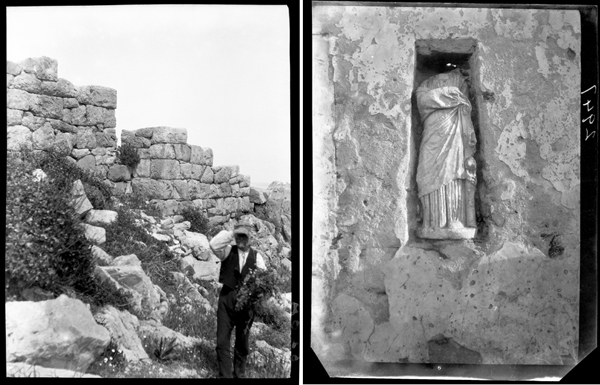
Left: BSA SPHS 01/3775.6208. Zarax: Detail of walls. Right: BSA SPHS 01/1128.2947. Cape Malea, Neapolis (ancient Boeae): Statuette of Bacchus.
Three small exploratory excavations at outlying sites were conduced in 1905: at Thalamae, Angelona and Geraki. Trial excavation at the ancient site of Thalamae was conducted by BSA student Guy Dickins with the principal aim of identifying the specific location of the Sanctuary/Oracle of Ino-Pasiphae mentioned in inscriptions found by Forster in his 1904 survey of the area. Forster had also identified the general location of the town site. Dickins found evidence for the sanctuary as well as traces of occupation from Neolithic to Medieval. The SPHS collection contains no photographs from Thalamae, but there are a handful from Angelona and Geraki.
In March of 1905 when Hasluck was surveying the area between Monemvasia and Epidaurus Limera near the village of Angelona, he was invited by a local farmer to view some of the antiquities he had unearthed. This proved to be the site of a small shrine which Hasluck and Wace excavated in early June of that same year. The site yielded numerous cult items: miniature vases, figurines, bronzes, a terracotta and stone reliefs. In a letter dated 12 June 1905, R.C. Bosanquet described the find at Angelona to George Macmillan, chairman of the BSA Managing Committee, as illustrating Spartan local hero worship “in a striking way”. He also mentions that Wace would be transporting the finds from Angelona to the Sparta Museum and that Wace hoped to incorporate them into the Sparta Museum catalogue as an appendix. The appendix never appeared, but there is reference to some of the Angelona miniature vases in the publication.
In that same letter to George Macmillan, Bosanquet contrasts the find at Angelona with the 1905 excavations at Geraki (ancient Geronthrae). According to Bosanquet, Hasluck and Wace had hoped to find the temple of Ares described by Pausanias, but instead “stumbled on the first prehistoric settlement which has been located in Laconia”. Trial excavations were carried out between the 26th of May and the 6th of June and, although the existence of a temple was implied by spolia (ancient worked marble blocks including Doric trygliphs) built into the churches of Ayios Nikolaos and Ayios Sozon, excavations showed no trace of a temple. However, the acropolis hill was surrounded by ‘Pelasgian’ walls of large stones and primitive construction which they suspected had been maintained and repaired in later times so that much of the original walls did not survive. They also excavated three small cist tombs. Wace’s later study of the pottery from their excavations pointed to possible Neolithic and ‘Mycenaean’ period pottery as well as Geometric, confirming an early date.
Even after excavation began at Sparta, further survey work in Laconia continued, although there are no images in the BSA SPHS photographic collection. Ramsey Traquair conducted another architectural survey in 1906 (completed in 1909) on Medieval Maniote churches. In 1907, Arthur Woodward extended Forster’s 1904 survey of the Gytheion area to cover the southern Mani peninsula, published jointly in 1907. Henry Ormerod filled in the gap of the inland area between Gytheion and the Spartan plain in 1909. The extensive coverage of Laconia by members of the BSA at this early date laid the groundwork for the BSA’s long association with Laconia where it has conducted fieldwork for over a century.
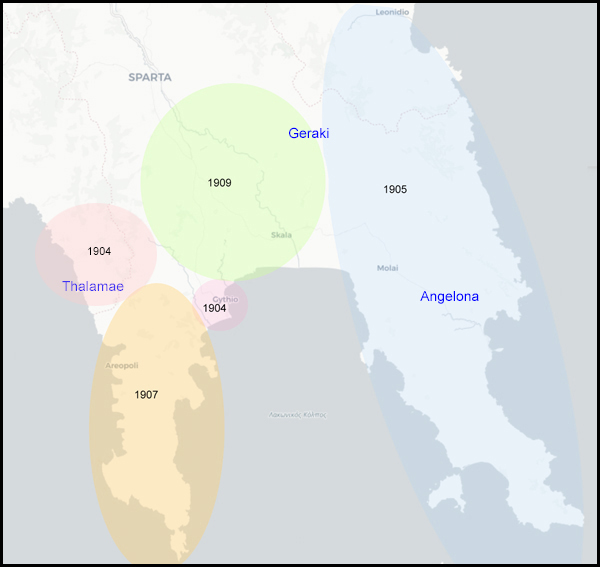
Map showing the basic areas of the Laconia Surveys 1904-1909 (not exact coverage) and the rough location of the three 1905 excavations.
Deborah Harlan
British School at Athens
Images from the BSA-SPHS collection are available on the BSA’s Digital Collections page.
Click here for more BSA Archive Stories.
Further Reading
Dickins, G. 1904/1905. ‘Laconia: III. Thalamae’, Annual of the British School at Athens, 11: 124–136.
Forster, E.S. 1903/1904. ‘South-Western Laconia. Sites’, Annual of the British School at Athens, 10: 158–166.
Forster, E.S. 1903/1904. ‘South-Western Laconia. Inscriptions’, Annual of the British School at Athens, 10: 167–189.
Forster, E.S. and Woodward, A.M. 1906/1907. ‘Laconia: II. Topography’, Annual of the British School at Athens, 13: 216–267.
Ormerod, H.A. 1909/1910. ‘Laconia: II. Topography’, Annual of the British School at Athens, 16: 62–71.
Traquair, R. 1905/1906. ‘Laconia: I. Mediaeval Fortresses’, Annual of the British School at Athens, 12: 259–276.
Traquair, R. 1908/1909. ‘Laconia: III. Medieval Churches. The Churches of Western Mani’, Annual of the British School at Athens, 15: 177–213.
Tod, M.N. and Wace, A.J.B. 1906. A Catalogue of the Sparta Museum. Oxford: Clarendon Press.
Wace, A.J.B. 1909/1910. ‘Laconia: III. Early Pottery from Geraki’, Annual of the British School at Athens, 16: 72–75.
Wace, A.J.B. and Hasluck, F.W. 1904/1905. ‘Laconia: I. Excavations near Angelona’, Annual of the British School at Athens, 11: 81–90.
Wace, A.J.B., Hasluck, F.W. and Tillyard, H.J.W. 1904/1905. ‘Laconia: II. Geraki’, Annual of the British School at Athens, 11: 91–123.
Wace, A.J.B. and Hasluck, F.W. 1907/1908. ‘Laconia: II.-Topography’, Annual of the British School at Athens, 14: 161–182.
Wace, A.J.B. and Hasluck, F.W. 1908/1909. ‘Laconia: II. Topography’, Annual of the British School at Athens, 15: 158–176.
